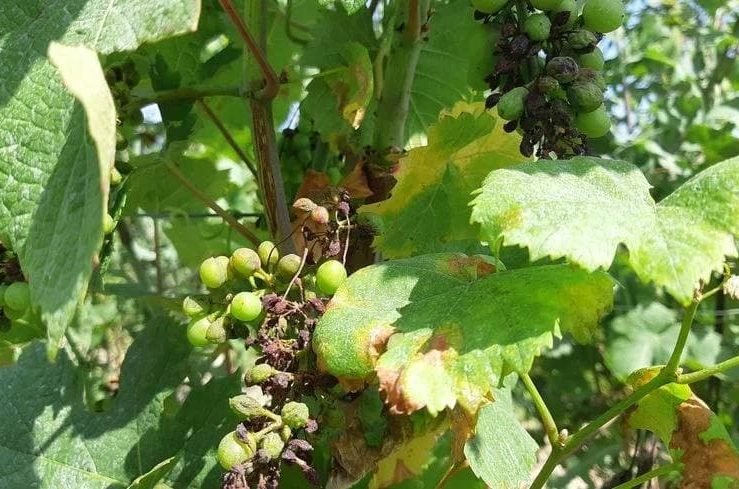
На сайте используются cookie файлы
The site uses cookie files
Данный сайт имеет возрастное ограничение!
This site has age restrictions!
Я подтверждаю, что мне, увы, уже давно исполнилось 18 лет
The “exceptional” rainfall at the start of summer led to “unprecedented attacks of mildew”, the CIVC reports, which already estimates “between 20 and 25%” the losses on the scale of the 34,000 hectares of the Champagne vineyard.
This summer brought heavy rainfalls to some regions of France. Recently, we have covered the problem in Alsace where the 15,600 hectares of vines are subjected to mildew, powdery mildew, brown and grey rot – which combine fungal diseases in a downward spiral.
The weather conditions are unfavorable this year. Moving to Champagne: “If the entire vineyard is concerned, there is a great heterogeneity of situations with losses ranging from a few percentages to more than 50%”, specifies the Interprofessional Committee of Champagne Wine (CIVC), which adds to these losses “30% due to spring frost.”
“The thousands of hectares of the Marne Valley, as well as some sectors of the Aube are particularly affected by this fungus which likes humidity and heat”, confirms Maxime Toubart, president of the General Syndicate of Winegrowers (SGV) and co-president of the CIVC.
“In two months, around 300 mm of rain fell. It’s huge especially when the vines need sun to ripen!” he explains. “In the Marne, the sectors of Sézannais, the Côte des Blancs and part of the Montagne de Reims are currently spared.”
“But the disease is gaining ground,” notes Maxime Toubart who traced the last major mildew attack on the Champagne vineyard back to 2012. Some winegrowers will not be able to achieve the yield of 10,000 kg per hectare decided on July 21 by the inter-profession grouping together with winegrowers and champagne houses.”
“But there is still the interprofessional reserve, or 7,600 kilos per hectare for those who have the most. It plays the role of shock absorber,” emphasizes Maxime Toubart. “And we have stocks that also allow us to respond to the market.”
“Downy mildew affects the potential of the harvest but not the quality. A good vintage is still possible”, insists the president of SGV.
Photo: lachampagnedesophieclaeys.fr, vitisphere.com